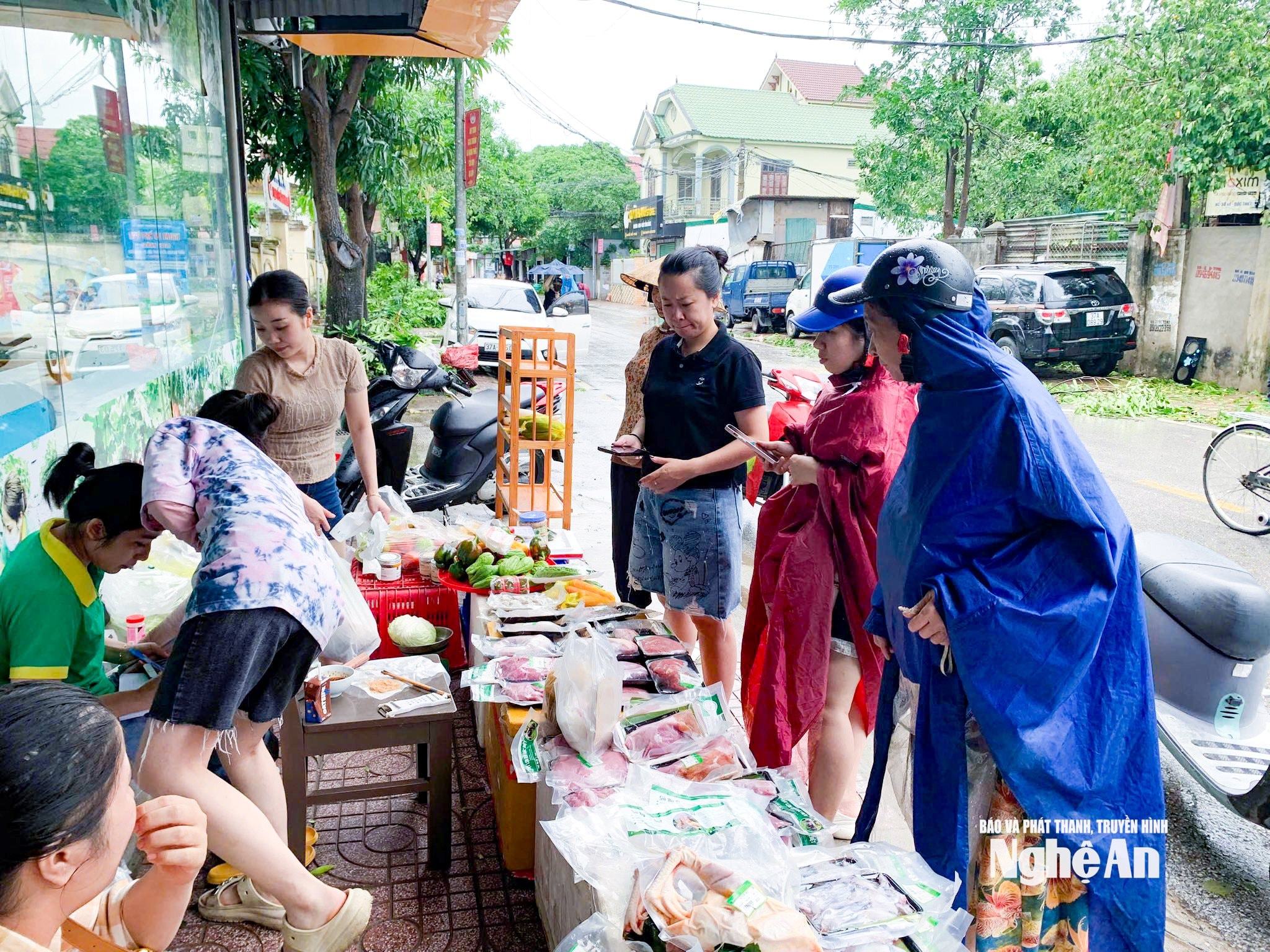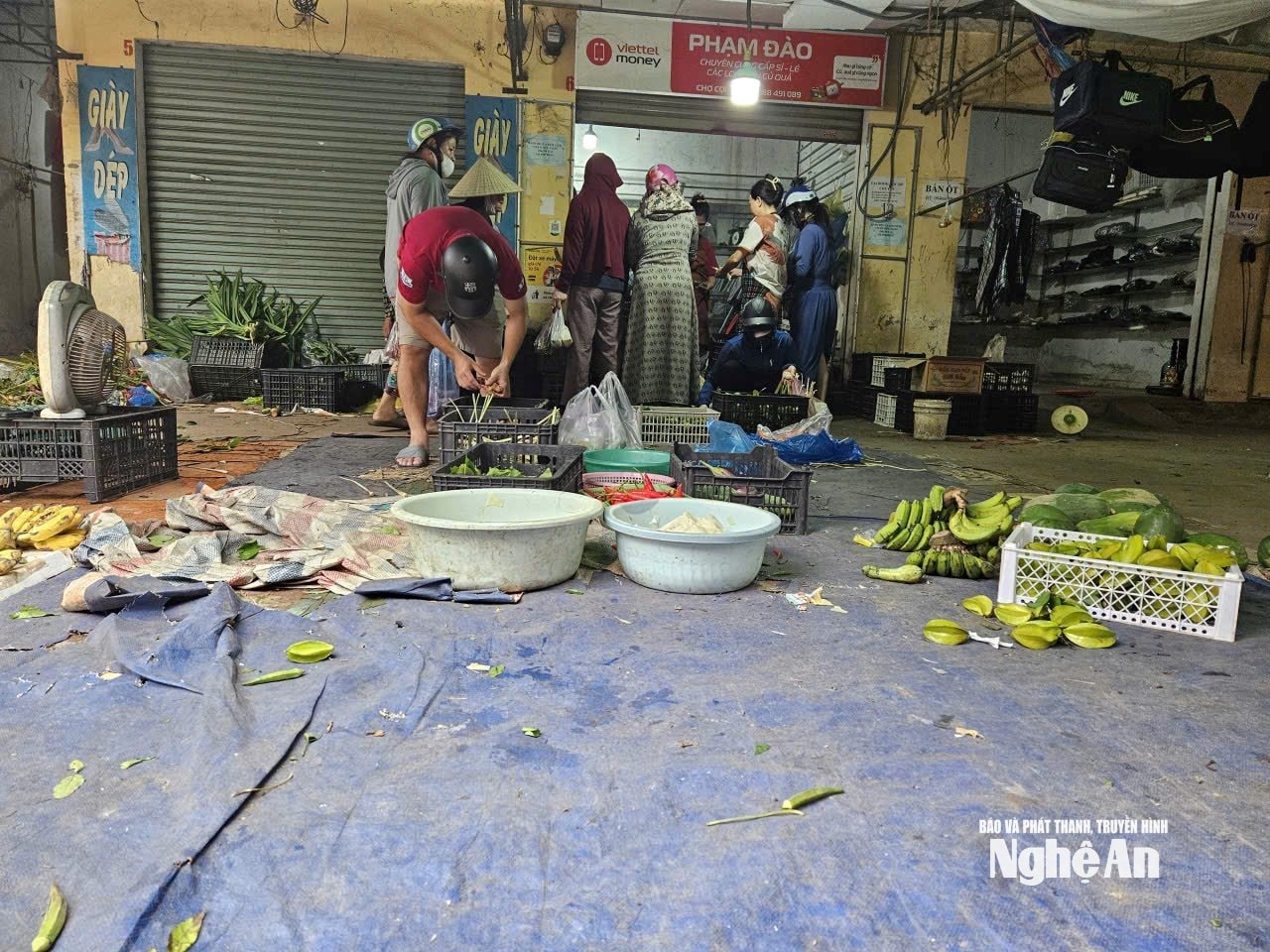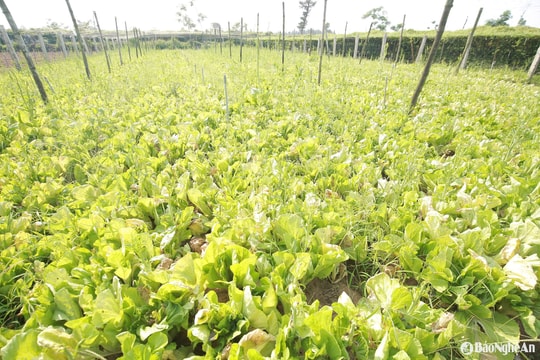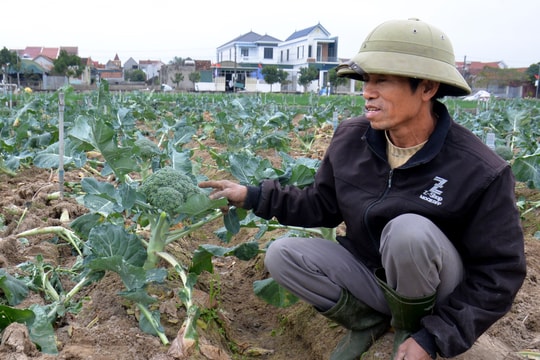Frozen foods on “big sale”, vegetables in Nghe An in short supply after storm No. 5
After storm No. 5, the food market in Nghe An fell into a contrasting situation: while fresh seafood and frozen food at businesses were forced to "big discounts" due to prolonged power outages, green vegetables, fresh meat and fish at the market were in short supply and prices increased sharply. People had difficulty buying and storing, making family meals in the days after the storm even more difficult.
.jpg)
Normally, after a big storm, fishermen cannot go out to sea, so the seafood market is often scarce, and prices increase accordingly. However, this time, a paradox occurred: fish, shrimp, squid, etc., which are "hot" items after the storm, are now sluggish and must be sold at a discount.
The cause was widespread, prolonged power outages that made it impossible for fresh seafood businesses to maintain their aeration systems, leading to suffocation and gradual death of farmed seafood.

Ms. Mai Han, owner of a large seafood facility on Le Viet Thuat Street (Vinh Loc Ward) sighed: “Before the storm, I imported 30kg of swimming shrimp, 25kg of crab, 30kg of chip chip, and clams to sell. The storm caused a power outage for 2 consecutive days, so I had to use batteries to keep the seafood tank running. Now the batteries are also dead, I can no longer aerate, many types are "suffocated", forcing me to lower the price to sell at a loss.”
According to Ms. Mai, the price reduction is quite deep compared to before the storm: whiteleg shrimp 30 pieces/kg from 320,000 VND now only 280,000 VND; Ca Mau crab from 450,000 VND down to 350,000 VND/kg; crab reduced by 80,000 VND/kg; clams and scallops reduced by 15,000-20,000 VND/kg.
“The price has dropped, we accept losses and still sell, but it is very difficult to sell because people have lost power and cannot buy to store in the refrigerator or process immediately,” she added.

Not only fresh seafood, but also processed food establishments are in a state of "restlessness". Ms. Yen Linh, the owner of a facility specializing in making spring rolls, nem re, and fried shrimp in Thanh Vinh ward, said: "The freezer contains 120 boxes of spring rolls, 100 boxes of nem re, fried shrimp... that have been thawed, many boxes of spring rolls have signs of broken shells. I was forced to post on groups to call for rescue, reduce prices to the maximum, even sell at a loss."
To limit spoilage, Ms. Linh also thought of a way to cook the food on the spot and sell it to customers immediately, charging an additional 10,000 VND per pre-cooked portion. "Consider it a loss-making measure, otherwise, if it spoils, it will be a total loss," she said.

The same situation is happening at many other clean food stores in wards and communes. Due to the prolonged power outage, freezers and refrigerators are not working, frozen goods are at risk of spoiling. To recover capital, stores are simultaneously "big discounts" to clear out inventory. However, purchasing power is still sluggish because most households are in the same situation of power outage, unable to stock up.
In contrast to the scene of seafood and frozen foods being sold off, the market for green vegetables in the traditional markets has fallen into a state of scarcity and price increase. Water spinach, which used to cost only 7,000 VND/bunch, has now increased to 10,000 VND; mustard greens 12,000 VND/bunch; passionflower 100,000 VND/kg; squash 30,000 VND/kg; potatoes 40,000 VND/kg; tomatoes have jumped to 50,000 VND/kg.

Ms. Pham Thi Anh, a vegetable vendor at Hung Dung market, said: “After the storm, most of the green vegetables in the fields were crushed, and the water spinach was flooded. The main vegetable supply areas such as Quynh Anh, Tan Mai, Quynh Mai, Dai Hue... were also heavily affected, and the supply of goods to the market was very limited. Moreover, the market was devastated after the storm, and the vendors were busy cleaning up and could not import goods in time.”
In fact, people had previously stocked up on dry and frozen food to weather the storm. However, when the power outage lasted for a long time, the amount of stored food was difficult to preserve, forcing them to process it quickly or find ways to "preserve it temporarily" by braising it or salting it. Meanwhile, green vegetables, an irreplaceable item in daily meals, were difficult to stockpile and were becoming a scarce necessity.
.jpg)
Ms. Tran Tuyet Phuong, a resident of Truong Vinh ward, shared: “We still have some food reserved for the storm, but we can’t keep it for long because there’s no electricity. We have to store it in saltwater for temporary preservation. All the green vegetables are muddy and waterlogged, so if we want to eat them, we have to go to the market to buy new ones. The price of vegetables is now much more expensive than before the storm, but we have to accept it because that’s normal after a natural disaster.”




